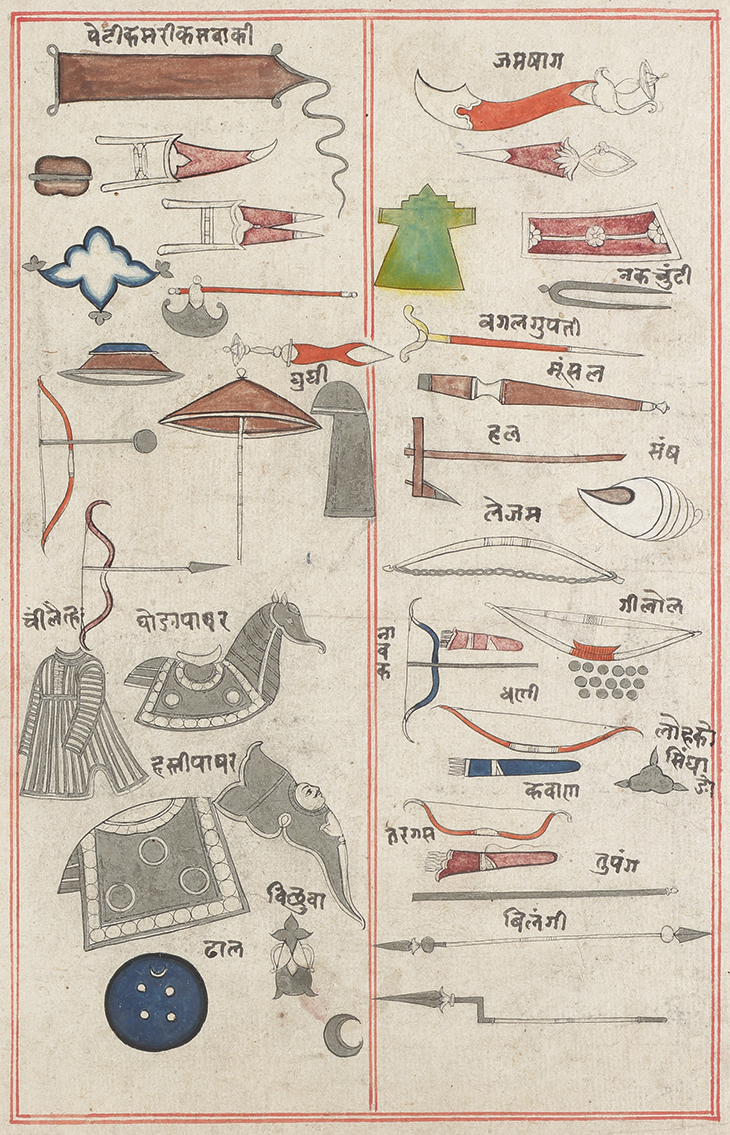This preview covers the first leg of Asian Art in London, focusing on Indian and Islamic art, which takes place from 22–31 October. A preview of the second part of the event, focusing on East Asian art (28 October–6 November), will follow.
After a successful experiment last year, Asian Art in London (AAL) is again divided into two sections, enabling galleries to represent their breadth of expertise and the event itself to honour the wide variety of cultures under its umbrella. With East Asian art in the spotlight in early November, the first leg of AAL will focus on the Islamic and Indian worlds – coinciding with Islamic and Indian sales at the major UK auction houses (21–30 October).
Among the gallerists taking part in both parts of the event is Joost van den Bergh, who, with James Mayor of Mayor Gallery, presents ‘Shrinathji: Krishna paintings from Nathdwara’ (26 October–6 November). Van den Bergh has long been fascinated by the figure of Shrinathji, a manifestation of Krishna in the form of a child and the inspiration for the Nathdwara school of painting in Rajasthan. He will show examples from the 18th and 19th centuries, including a 19th-century watercolour miniature of Navnitapriyaji – another embodiment of young Krishna – as well as a carved stone stele of Ganesh from 16th/17th-century Nepal.
The Svarup Navnitapriyaji (19th century), Nathdwara, Rajasthan, India. Joost van den Bergh (in the region of £4,000)

Meanwhile arms and armour specialist Peter Finer is staging ‘Mythical Beasts and Worldly Creatures’, an exhibition that includes bejewelled and highly decorated swords and daggers from India and Iran (21 October–6 November). A fine shield from 19th-century Iran reflects the rich culture of the Qajar dynasty (1789–1925). Crafted in steel, gold, iron, velvet and leather, its outer iron brim is decorated with running deer and birds within foliage and with fragments of poetry in fine Naskh calligraphy.
Runjeet Singh, another specialist in this field, will show two rare painted illustrations of Indian arms and armour with Sanskrit annotations, from Rajasthan or Awadh (in the present-day Uttar Pradesh) and dated to the late 18th or early 19th century. Besides their inherent charm they are, Singh suggests, ‘hugely important things for the advancement of research into Indian arms and armour.’
Illustration of arms and armour with Sanskrit inscriptions (18th–19th century), Rajasthan or Awadh, India. Runjeet Singh (price on application)

Grosvenor Gallery is showing the work of contemporary Sri Lankan artist Senaka Senanayake in ‘Splendours of the Rainforest’ (21 October–6 November). Created in Senanayake’s studio in Colombo, which is surrounded by a lush tropical garden, the paintings address the devastation of the Sri Lankan rainforest, much of it replaced by tea plantations.
Exhibiting at 27 Dover street, Marcel Nies Oriental Art brings Indian, South East Asian and Himalayan pieces. Among these are an 11th-century Chola bronze statue of the Hindu deity Parvati and an eighth-century figure of Vishnu with two attendants, carved from green chlorite (28 October–6 November).
Among the auction house highlights are, at Christie’s, a splendid silver and copper inlaid brass ewer from north-east Iran (c. 1200; £300,000–£500,000) and, at Sotheby’s, two rare illustrated sheets from Mughal manuscripts (£60,000–£80,000 and £100,000–£150,000). Chiswick Auctions fields a rare set of 11 carved ivory figures, one representing the first Sikh ruler, Maharaja Ranjit Singh (1780–1839), which were made in north India in the 1830s or ’40s (£25,000–£30,000). Beatrice Campi, the firm’s head of Islamic and Indian art, says these would have been a special commission from a Sikh patron – and were much sought after as collectables in England in the 19th century.
The Indian and Islamic section of Asian Art in London is at various venues from 22–31 October.
From the October 2021 issue of Apollo. Preview and subscribe here.



